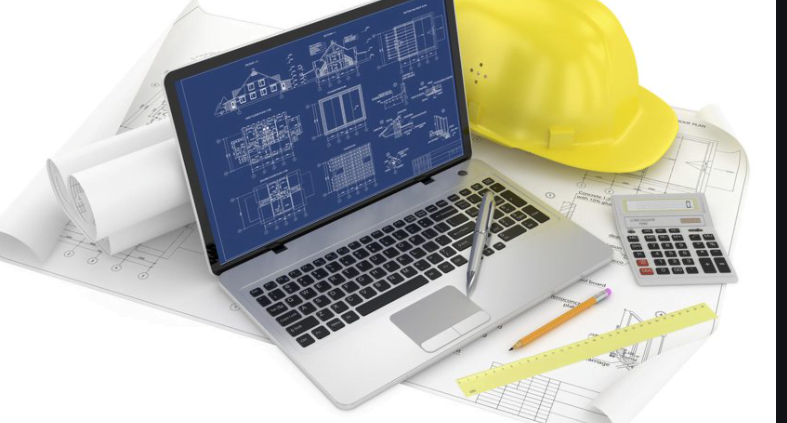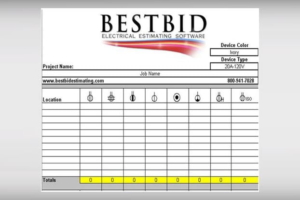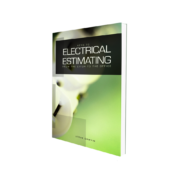Many companies rely on the electrical estimate per square foot method, but this approach can lead to significant pitfalls. Instead, leveraging historical data can provide a more reliable foundation for your estimates. This blog will discuss how to use historical data effectively when estimating commercial electrical work and why it’s essential to move beyond simple square foot pricing.
The Limitations of Square Foot Pricing
Pricing electrical work by the square foot can be misleading. While it may seem straightforward, the reality is that several critical factors influence project costs beyond just square footage. For example, the type of lighting package, gear requirements, project location, and heating systems (electric vs. gas) all play significant roles in determining the final price.
Additionally, without a detailed material list or a way to track project progress, estimators may find it challenging to create accurate bids. For instance, a hospital’s electrical installation will inevitably cost more than that of a warehouse due to the complexity and specific requirements involved. Thus, relying solely on estimating commercial electrical work by square foot can lead to underbidding or overbidding, both of which can jeopardise profitability.
The Value of Historical Data
One of the most valuable assets an estimator can possess is historical data from past projects. Over your career, you will encounter numerous jobs that provide insights into what works and what doesn’t. By systematically recording information about each project, you can build a comprehensive database that helps inform future electrical estimate per square foot.
Key Information to Record
To create a robust historical data set, consider tracking the following details:
- Job Name [Example]: McDonald’s
- Type of Job: Fast Food Restaurant
- Date of Work: 1-1-2019
- Length of Project: Duration in days or weeks
- Contractor[Example]: Lincoln Contractors
- Distance from Your Shop: Consider travel costs like hotel and per diem
- Project Manager and Superintendent: Track their effectiveness on different projects
- Crew Information: Who worked on the job?
- Weather Conditions: Did weather affect productivity?
- Quoted Price of Project: What was your initial estimate?
- Cost of Project: Final cost incurred
- Man-Hours Quoted vs. Completed: Compare estimates with actual time spent
- Material Quoted vs. Used: Track discrepancies in material costs
- Lighting Quote and Gear Quote: Specific costs for these elements
- Square Footage of Project: Total area covered
- Bid Outcome: Did you win or lose? Who was the low bidder?
By maintaining this information in an organised format—such as an Excel spreadsheet—you gain valuable insights into your operations.
Learning from Historical Data
Once you have collected enough data, you can analyse it to identify trends and patterns. For example:
- You might discover that certain contractors consistently lead to better project outcomes.
- You may find specific locations are more costly due to travel or logistical issues.
- You could learn which types of projects yield higher profitability.
When bidding on similar projects in the future, you can reference this historical data as a guide but never as the sole basis for your bid. For instance, if you’re estimating another McDonald’s project, you can compare man-hours and material costs against your previous job. If your new electrical estimate per square foot significantly deviates from historical data—say, if the electrical estimate per square foot doubles—you’ll know to investigate further before finalising your bid.
The Importance of Flexibility
While historical data provides a solid foundation for estimating future projects, it’s essential to remain flexible. The electrical industry is continually evolving; factors such as advancements in LED lighting technology or changes in labour rates can significantly impact costs. Therefore, always be ready to adjust your electrical estimate per square foot based on current market conditions.
Moreover, using historical data alongside square foot pricing as a guide allows you to make informed decisions without relying solely on outdated methods.
Conclusion
While many companies still cling to the idea of pricing their work by square foot, this approach is fraught with challenges that can lead to financial losses. Instead, investing time in collecting and analysing historical data will empower you to create more accurate electrical estimate per square foot based on real-world experience. By understanding what has worked in the past, you can refine your estimating process and improve profitability over time.
For those looking for efficient estimating solutions, consider using Best Bid Electrical Estimating Software. It streamlines the estimating process and helps you leverage historical data effectively.











